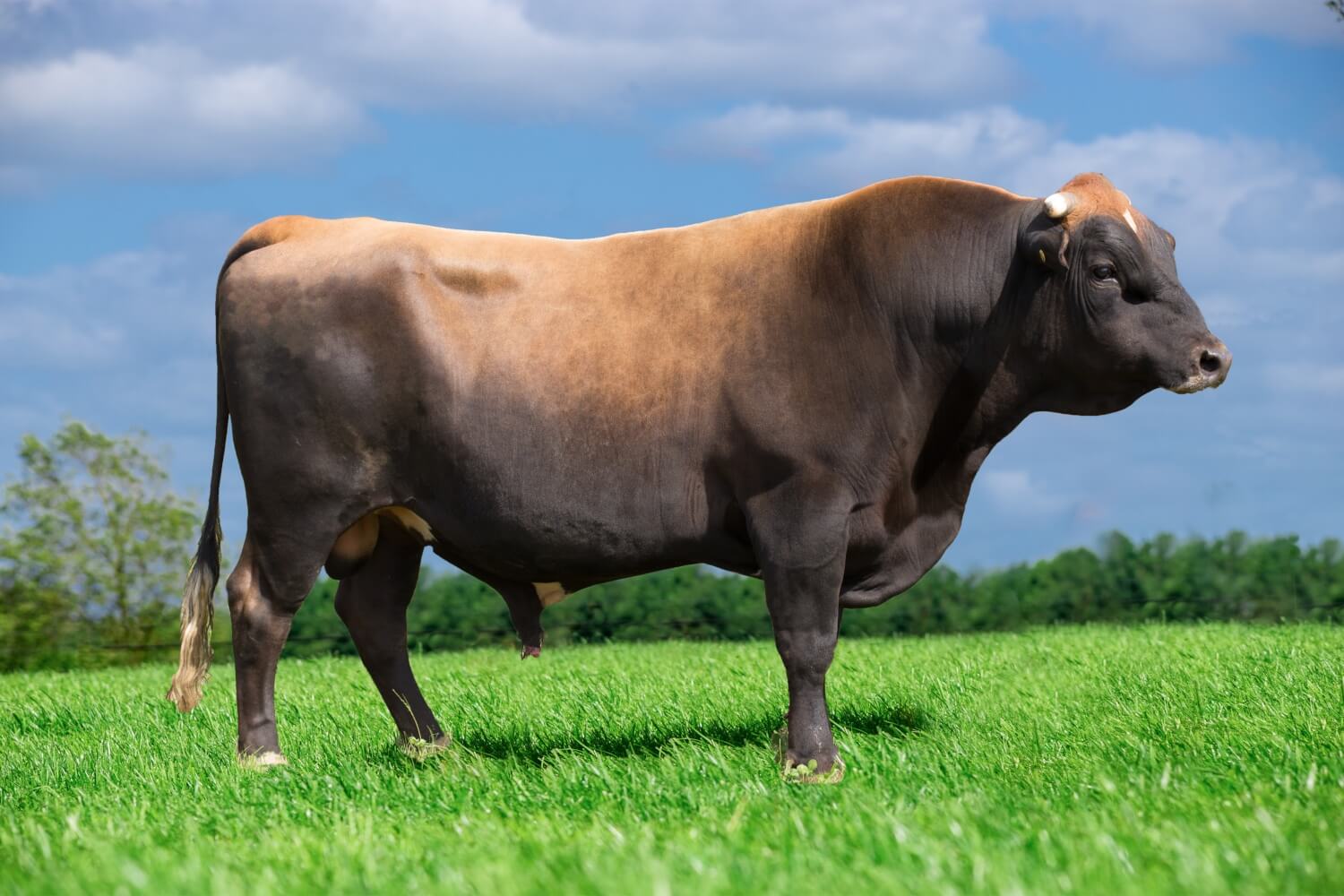- As heat tolerant as Indicus breeds
- As milkable as any Taurus breed
- Kiwipole™ Eros and Himeros bulls, and an emerging team, are anchored in New Zealand selected pasture performance
- Kiwipole™ Pathos and an emerging bull team are anchored in U.S feedlot performance
Science Supporting Information
The KiwipoleTM breed is a quantum leap forward in tropical dairy genetics with:
- A targeted 100% Taurus animal
- Proven dairy type and associated milkability and genetic potential established through 6 years of milking in NZ in a large scale commercial herd
- True-to-breed and emerging Purebreed nucleuses in place for:
- S Holstein
- NZ Jersey
- NZ Holstein
- NZ Cross Breed
- NZ Cross Breed / U.S Holstein
Science background
The Senepol was observed to be as heat tolerant as Brahman (Bos Indicus) cattle Hammond et al (1994); Olson et al (1997). The root cause of the heat tolerance has more recently been identified as the slick gene by Littlejohn et al (2014) which has been the topic of significant scientific interest since. Huson (2014) suggests the dominant mutation was originally derived from the Criollo breeds, and is present in the Senepol, the Carora, and the Romosinuano. Regulation of body temperature is heritable in Holsteins (Dikmen et al 2012, 2013). Dikmen et al (2014) also concluded Holsteins with slick hair, have superior thermoregulatory ability compared with non-slick animals. Littlejohn et al (2014) identified the specific prolactin receptor PRLR base deletion at exon 10, LIC has patent pending. The newly developed DNA test clearly allows the identification of progeny with the gene introgression, allowing the development of DNA proven homozygous bulls to transmit the heat tolerance to 100% of their progeny. The difficulty previously for breeders was in identifying which of their progeny were carriers of the slick gene, beyond the phenotypic slick coat, and differentiating those that were homozygous from heterozygous. Recent year’s research has moved to quantifying its impact on productivity and value to the farmer. The first quantification of the slick introgression to Holstein value, came from Dikmen et al (2014) at the University of Florida, where the slick versus wild type milk improvement in the summer was recorded as 4 litres per day. Ortiz (2015) also observed an almost 2 month improvement in calving interval. Most recently ContrerasCorrea (2016) at the University of Puerto Rico recorded a slick versus wild type milk production improvement of 3 litres per day. Reference links are available on the Dairy Solutionz website www.dairysolutionz.co.nz

Kiwipole Slick Pathos BDPH-15-616 (516583)

Kiwipole Slick Pathos BDPH-15-616 (516583)

Kiwipole Slick Pathos BDPH-15-616 (516583)

Kiwipole Slick Pathos BDPH-15-616 (516583)

Kiwipole Slick Pathos BDPH-15-616 (516583)

Kiwipole Slick Pathos BDPH-15-616 (516583)

Kiwipole Slick Pathos BDPH-15-616 (516583)

Kiwipole Slick Pathos BDPH-15-616 (516583)




